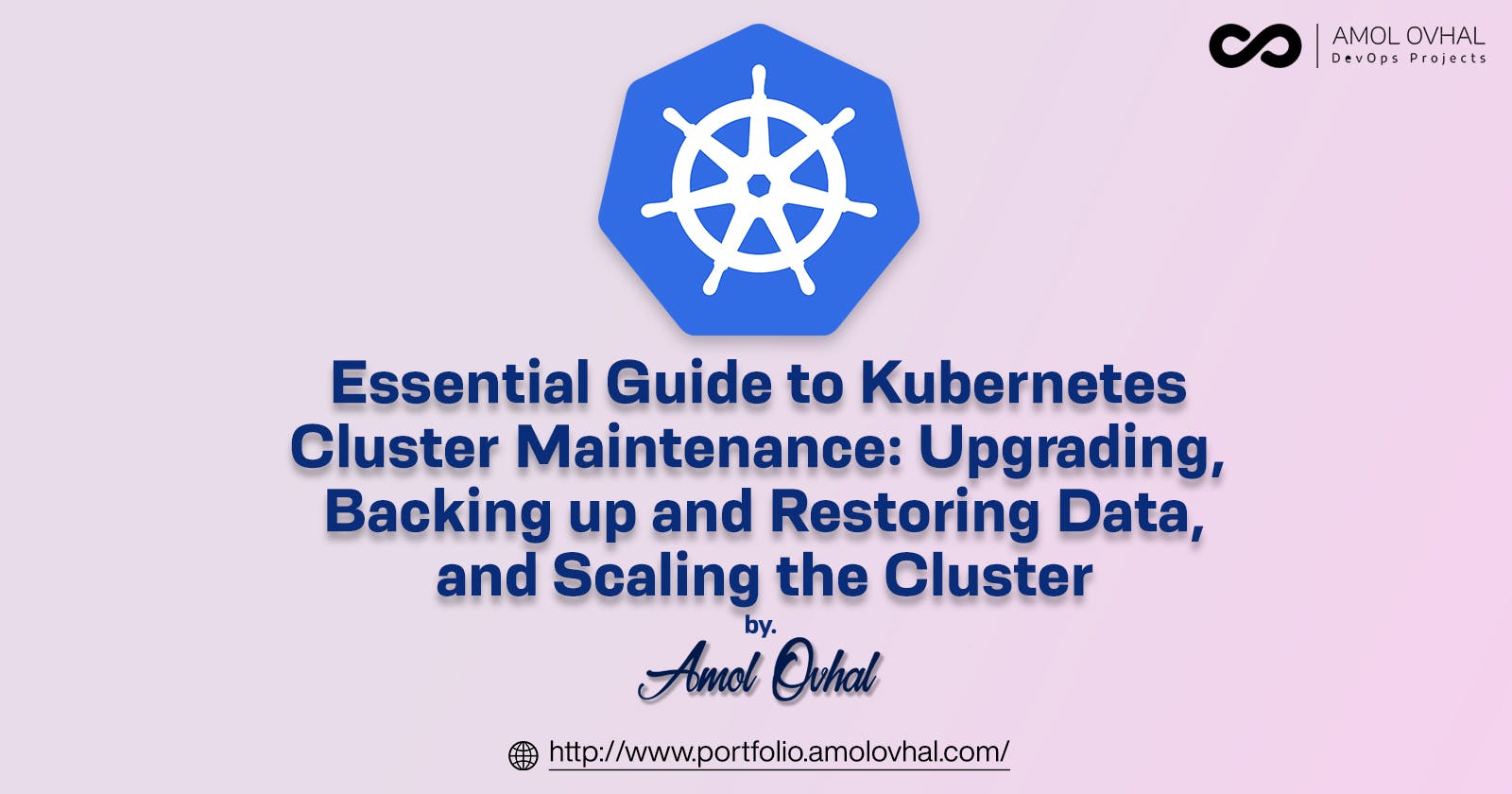Essential Guide to Kubernetes Cluster Maintenance
Upgrading, Backing up and Restoring Data, and Scaling the Cluster
Kubernetes is an open-source container orchestration system that automates the deployment, scaling, and management of containerized applications. A Kubernetes cluster is a group of nodes that run containerized applications and are managed by the Kubernetes control plane. As with any complex system, Kubernetes clusters require maintenance to ensure they operate smoothly and efficiently. In this blog post, we will explore the different aspects of Kubernetes cluster maintenance, including upgrading the cluster, backing up and restoring data, and scaling the cluster.
Upgrading the Cluster
Kubernetes is a rapidly evolving platform, and new features and bug fixes are frequently released. Upgrading the cluster to the latest version is crucial to take advantage of these improvements and to ensure the cluster's security and stability. Upgrading a Kubernetes cluster involves upgrading the Kubernetes control plane and the nodes.
To upgrade the control plane, you should follow the instructions provided by your Kubernetes distribution. For example, if you are using Kubernetes on AWS, you can use the kops tool to upgrade the control plane. You should also ensure that all the Kubernetes components, such as etcd, kube-apiserver, kube-controller-manager, and kube-scheduler, are upgraded to the latest version.
To upgrade the nodes, you can use tools such as kubeadm, which automates the process of upgrading a node to the latest version. Before upgrading the nodes, you should ensure that all the applications running on the nodes are compatible with the new version of Kubernetes.
Backing up and Restoring Data
Data loss can occur due to various reasons, such as hardware failures, software bugs, or human errors. Therefore, it is essential to have a backup strategy in place to recover from data loss quickly. Kubernetes provides several mechanisms for backing up and restoring data, including:
Persistent Volumes (PVs) and Persistent Volume Claims (PVCs): PVs and PVCs are Kubernetes objects that allow you to decouple the storage configuration from the pod configuration. You can use PVs and PVCs to create snapshots of the data stored in a container and restore them when needed.
Kubernetes API server: The Kubernetes API server stores the state of the Kubernetes objects in etcd, a distributed key-value store. You can use tools such as etcdctl to create backups of the etcd data and restore them when needed.
Third-party backup solutions: Several third-party backup solutions, such as Velero and Stash, provide Kubernetes-specific backup and restore capabilities.
Scaling the Cluster
Kubernetes allows you to scale the cluster horizontally by adding or removing nodes and vertically by increasing or decreasing the resources allocated to the nodes. Horizontal scaling provides better fault tolerance and high availability, while vertical scaling improves performance.
To scale the cluster horizontally, you can add or remove nodes using tools such as kubeadm or the Kubernetes API. Before adding or removing nodes, you should ensure that the cluster's capacity requirements are met and that the applications running on the nodes can handle the changes.
To scale the cluster vertically, you can increase or decrease the resources allocated to the nodes, such as CPU and memory. You can use Kubernetes features such as Horizontal Pod Autoscaling (HPA) and Vertical Pod Autoscaling (VPA) to automate the process of scaling the resources allocated to the pods.
Conclusion
Maintaining a Kubernetes cluster involves upgrading the cluster, backing up and restoring data, and scaling the cluster. These tasks require careful planning and execution to ensure the cluster's stability, security, and efficiency. By following best practices and using Kubernetes-specific tools and features, you can ensure that your Kubernetes cluster operates smoothly and efficiently, even in the face of unexpected events.

